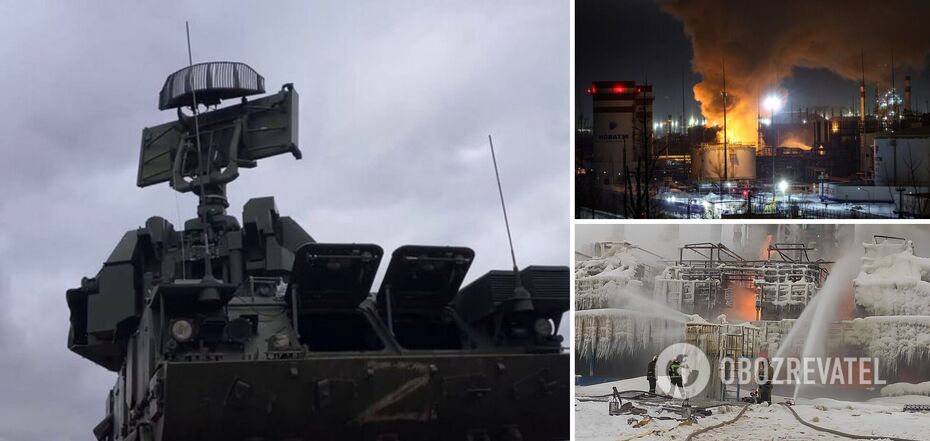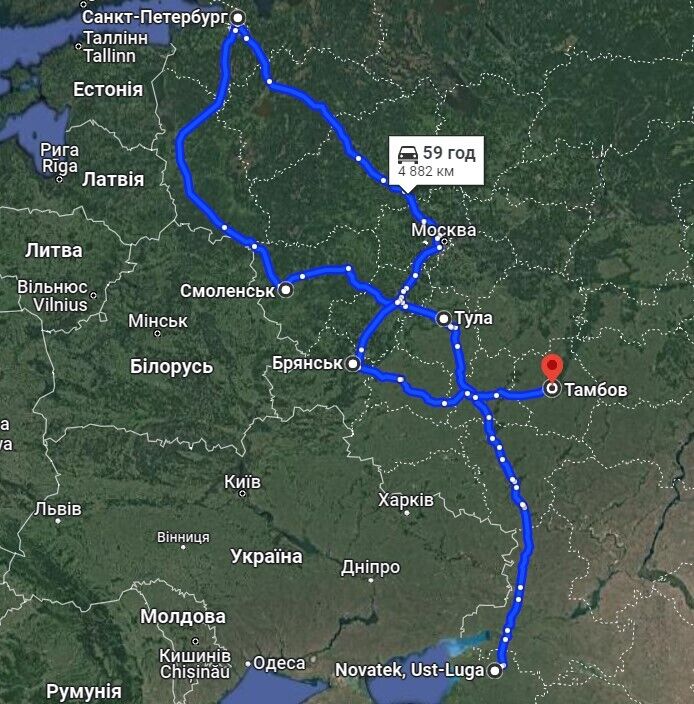News
Drone attack on Leningrad region reveals Russian air defense vulnerabilities: ISW reveals details
Over the past few days, Ukraine has launched a series of successful drone strikes against military targets in the Leningrad and Tula regions of the Russian Federation. They have once again proved that the aggressor country is poorly covered by air defense, although each time it claims to have "successfully repelled" such attacks.
Repeated such strikes could disable Russian short-range air defense systems on the expected routes of UAVs. This was pointed out by analysts at the Institute for the Study of War (ISW).
They recalled how on the night of January 20-21, Ukrainian drones hit the Shcheglovsky Val plant in Tula, as well as the Novatek plant and gas terminal near the port of Ust-Luga in the Leningrad region of the Russian Federation.
The Tula plant produces the Pantsir-S and Pantsir-S1 air defense systems, while the Ust-Luga facility processes stable gas condensate into light and heavy oil, diesel fuel, kerosene, and naval fuel.
The Russians themselves posted footage of the explosions in these settlements online, commenting that they were the result of successful Ukrainian strikes. Geolocation footage published on January 20 also showed explosions over Smolensk, indicating possible Ukrainian strikes in the area.
However, the Russian Defense Ministry claimed that its air defense system "destroyed five drones" over the Tula, Orel, and Smolensk regions. Prior to that, Russian authorities had made similar claims about "repelling" several other attacks, but Ukraine confirmed that on January 18, Ukrainian forces had successfully drone strikes on an oil terminal in St. Petersburg, Leningrad Oblast, and on January 19, on an oil depot in Klinets, Bryansk Oblast, and a gunpowder plant in Tambov Oblast.
Against this backdrop, Russian insider sources acknowledged that the air defense cover over the Leningrad region is poor. According to them, it is most likely "not designed to protect against attacks from the south."
The analysts suggested that the air defense systems in the Leningrad region are most likely positioned to repel attacks from the northwest and west, as Russia has historically built its air defense in the area to defend against hypothetical NATO attacks.
"The Russian military is currently reforming the Leningrad Military District (LMD) with the expressed intention of preparing for a potential future conventional war against NATO and may be redeploying military assets to position them along the border with NATO member states," ISW noted.
It is believed that the Ukrainian strikes in Leningrad region may prompt Russian troops to move short-range air defense systems along the expected UAV flight routes to protect potential targets of strategic importance.
However, Russian forces using short-range systems such as the Pantsyr will likely not be able to cover all important potential targets in Leningrad and other regions without deploying additional systems to those areas.
"And the ongoing strikes in Russia's deep rear may thus increase the overall pressure on Russian air defense," the analysts concluded.
As reported by OBOZ.UA, the latest UAV strikes on targets in the Leningrad and Bryansk regions of the Russian Federation are distinguished by several factors, the main one being the expansion of geography. Analysts explained what makes these drone attacks on Russian territory unique and what to expect in the near future.
Only verified information is available on the OBOZ.UA Telegram channel and Viber. Do not fall for fakes!




























